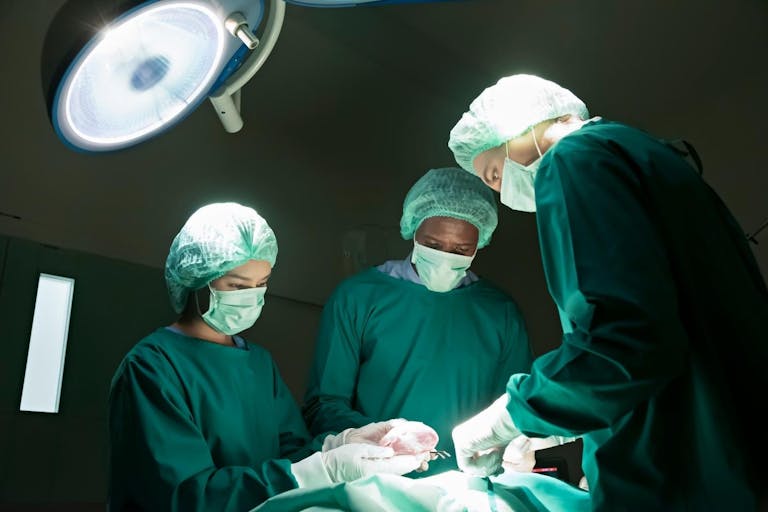
Bioethicist claims surgeons should be allowed to kill patients during organ harvesting
Wesley J. Smith
·
Former abortionist: Women don’t discuss botched abortions because they want to forget
Dr. Beverly McMillan committed abortions for years before she quit the abortion industry. McMillan worked at a busy abortion facility with other abortionists. Eventually, she became the facility’s medical director. One of her jobs was to keep track of the facility’s surgical complications. In a speech she gave at a conference sponsored by the Pro-Life Action League, she recalled a woman she injured:
I kept track of our complications; we had monthly meetings where we went over morbidity; we fortunately did not go through mortality. I had one of the worst complications at the clinic. I perforated a uterus and sucked a piece of small bowel right into the tubing.
As Canadian abortionist Dr. Henry Morgentaler has observed, a perforated uterus is a well-recognized hazard of abortion. He says that the cervical canal must be widened “by pushing metal dilators through it.” While “a very thin dilator might pass through… easily,” as the dilators become thicker, “the resistance of the muscles holding the cervix closed increases correspondingly,” and the doctor must apply “steady pressure” to access the uterus. Morgentaler continues:
Occasionally, the resistance gives way suddenly and the dilator is then propelled into the uterus with a force which might bring it in too far, thus perforating the uterine wall. In pregnancy, the uterine wall softens considerably and thins out in certain places; if the dilator hits a weakened spot, it might go through it. If the doctor is unaware of this… he will pursue the dilatation which will then enlarge the perforation.
When the opening necessary for the abortion has attained the appropriate diameter, the doctor will try to evacuate the uterus but may find that no material is forthcoming because his instruments, instead of being in the uterine cavity, are elsewhere, usually in the abdominal cavity. If the aspiration cannula or sharp curette is used, it may damage the small intestine or rupture a major blood vessel with immediate shock a likely occurrence. Major surgery is then needed…. (1)

When Dr. McMillan tried to commit the abortion on her patient, something went very wrong… and it was then that she noticed something strange. McMillan says (emphasis added):
We had the young lady taken over the hospital where the residents took care of her and a surgeon spliced her bowel back together, and I went over to see her about two days later before she left the hospital to just say hello and are you doing okay, and to tell her I was sorry this had happened. She didn’t want to talk to me. She wasn’t angry at me. She didn’t want to think about the abortion, thank you. She was ready to get out. Denial. Absolute denial just right there. That’s why abortionists don’t get sued. These folks don’t want to think about it for at least two years and then the Statute of Limitations is up. That is the reason that many women don’t sue from complications from abortion.
McMillan is not the only former abortion worker to express this sentiment. Carol Everett, who owned four abortion facilities and directed two, has said, “Post-abortion complications are never made known to the public, because abortion has a built-in cover-up. Women want to deny it and forget it, not talk about it.”
According to these former abortion workers, women don’t talk about their abortion complications because they don’t want to talk about (or remember) their abortions. A desire to put the experience behind them as well as social stigma encourages women not to make their experiences widely known. The exception is women who go through a healing process and speak out about regretting their abortions.
READ: Video: Woman shares story of abortion regret in effort to help others
We know complications from abortion happen. But is hard to find out how common they are. In most states, there are no regulations about how these complications must be reported. It is often left up to the abortionist’s discretion.
The New York Times ran an article about the safety of the abortion pill. A spokesperson from the abortion pill’s manufacturer was questioned about whether the abortion pill was more dangerous than surgical abortion. She conceded that she had no way of knowing:
Dr. Cynthia Summers, a spokeswoman for Mifeprex’s manufacturer, Danco Laboratories, said a comparison of the risks of medical and surgical abortion was unfair because, she said, reports of problems with surgical procedures were poorly collected.
Another New York Times article quoted Monique Chireau, a professor of obstetrics and gynecology at the Duke University School of Medicine. She said:
Article continues below
Dear Reader,
In 2026, Live Action is heading straight where the battle is fiercest: college campuses.
We have a bold initiative to establish 100 Live Action campus chapters within the next year, and your partnership will make it a success!
Your support today will help train and equip young leaders, bring Live Action’s educational content into academic environments, host on-campus events and debates, and empower students to challenge the pro-abortion status quo with truth and compassion.
Invest in pro-life grassroots outreach and cultural formation with your TRIPLED year-end gift!
The truth is we have no idea what the rates of morbidity and mortality for abortions are in the United States, because the data system is flawed. Despite all we may hear about abortion being a benign procedure, it’s really not. And it’s important to remember it’s elective. This is not lifesaving surgery or surgery for cancer.

Beverly McMillan also had something to say about how common abortion complications are (emphasis added):
Planned Parenthood clinics, and free-standing abortion clinics like them, claim they have an untarnished record of no complications from their abortion procedures, but what they don’t know is that I’m the practitioner who sees their complications. These women don’t go back to the clinic where they’ve had a bad experience. They show up in my office or in my emergency room with their bleeding or with their infections or with their retained placenta, needing another D&C.
Other doctors have spoken out about treating victims of botched abortions.
Dr. Stephen Foley performed emergency surgery on a woman who still had part of the baby left inside her after a botched abortion. He says:
It is not acceptable to refer your patients to the emergency department and assume the on-call doctor will take care of any complications and assume all the risk associated with the complications. No practicing physician can maintain privileges to practice and perform surgery if they do not provide specific coverage for their patients, in case of a complication. It is considered abandonment of your patient. (2)
Since the Supreme Court struck down laws requiring abortionists to have admitting privileges at a hospital near the abortion facility, these cases will likely become more and more common.
READ: Brothers of 24-year-old botched abortion victim demand answers
Dr. Bryan Calhoun, vice chairman of the Obstetrics and Gynecology Department at West Virginia University, made this statement in a letter to West Virginia Atty. Gen. Patrick Morrisey, who was considering new abortion facility regulations:
We commonly (I personally probably at least weekly) see patients at Women’s and Children’s Hospital in our emergency room or ultrasound center with complications from abortions at the centers in Charleston: so much for “safe and legal.” These patients are told to come to our hospital because the abortion clinic providers do not have hospital privileges to care for their patients, so we must treat them as emergency “drop ins.… No other medical providers are allowed to care for patients, have no backup coverage, and then abandon them to the emergency room. We would be held ethically and legally liable.
Local doctors who treat victims of botched abortions are not asked to report such complications to the Centers for Disease Control. Instead, statistics on abortion complications are gathered from abortion facilities, whose directors have a vested interest in not reporting them. In addition, these facilities often do not see women coming back with complications because these women go to emergency rooms or their own OBGYNs to be treated, not abortion facilities. Therefore many abortion complications are unknown to the providers. Thus, even a facility that does report its complications is likely to miss some of them.
Beverly McMillan speculates on why so many women are injured by abortionists:
Today abortionists are free to operate on an assembly line basis. The faster they work, the more money they make. When women get hurt… Well, that’s just the risk that goes with any surgery. (3)
Notes
Henry Morgentaler Abortion and Contraception (New York: Beaufort Books, Inc., 1982) 73-74
Richard and Rhonda White Confronting Abortion Distortions(Xulon Press, 2013) 127
Richard and Rhonda White, 58
Live Action News is pro-life news and commentary from a pro-life perspective.
Contact editor@liveaction.org for questions, corrections, or if you are seeking permission to reprint any Live Action News content.
Guest Articles: To submit a guest article to Live Action News, email editor@liveaction.org with an attached Word document of 800-1000 words. Please also attach any photos relevant to your submission if applicable. If your submission is accepted for publication, you will be notified within three weeks. Guest articles are not compensated (see our Open License Agreement). Thank you for your interest in Live Action News!

Wesley J. Smith
·
Analysis
Cassy Cooke
·
Analysis
Cassy Cooke
·
Analysis
Bridget Sielicki
·
Analysis
Cassy Cooke
·
Analysis
Cassy Cooke
·
Guest Column
Sarah Terzo
·
Abortion Pill
Sarah Terzo
·
Guest Column
Sarah Terzo
·
Guest Column
Sarah Terzo
·
Guest Column
Sarah Terzo
·